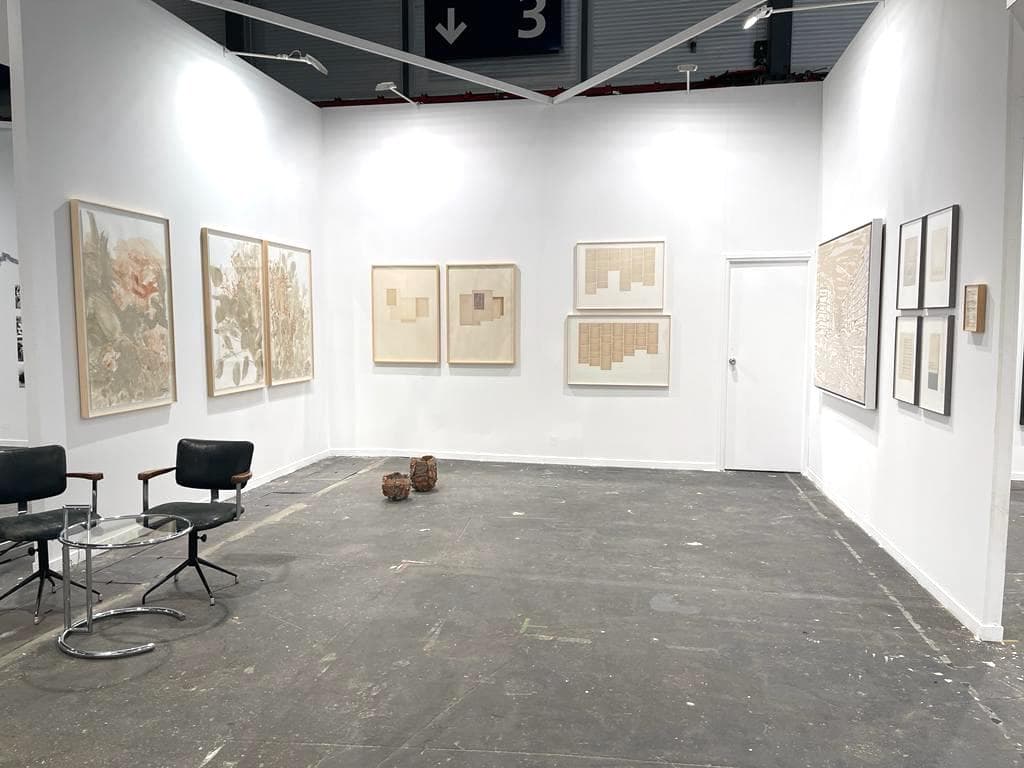
Estampa 2022
October 13-16, 2022
Booth 5A11, IFEMA Madrid
For this edition of Estampa, our stand brings together the work of two artists of the same generation whose work oscillates between a poetic plasticity and the generated concept stemming from the physical trace of the gesture on paper.
On the one hand, we present the work of Mar Arza (Castelló de la Plana, 1976), in whose artworks and installations the presence of text is conceived as a plastic, graphic and aesthetic element, which is capable of spreading expressiveness at the same time that it generates a reflection on the content and form of language. We can affirm that Arza’s work, currently on display in the exhibition “A pesar / A saber / A tientas”, curated by Nuria Enguita at IVAM, has evolved from paper to other media such as sculpture or installation, but always with a common nexus, the presence of the typographic sign. For this reason, and with the intention of giving prominence to these pieces, we have selected a group of works produced for her last exhibition at the gallery, among which we distinguish the series Lindes (2020-21), where the author plays with punctuation and different fragments of text to build a narrative continuity; and the series Estados transparentes (2020), in which the watermark conditions the support on which the text is built, and with which, delving into the matter of the sheet, the watermark is extirpated to destabilize the established on the written page.
On the other hand, and in dialogue with the delicate graphic traces of Mar Arza, we show works in cement and brick on paper from États limites, the latest series by French artist Jean Denant (Sète, 1979). Works produced for the current exhibition at the gallery, with which the artist reflects upon humanity through the use of materials typical of architecture, dissipating the boundaries between disciplines, encouraging us to gravitate towards a poetic sensibility. États limites alludes to the organization of those territories that, being imagined or real, nourish each other, highlighting the porous fragility of borders, whether psychological, geographical or political. Borders that are essentially turning points where flows change direction, social constructions that do not consist of preventing things from moving, but act as symbols of the movement itself. Works in which the fragility of the content clashes in contrast with the roughness of the materials that contain it.